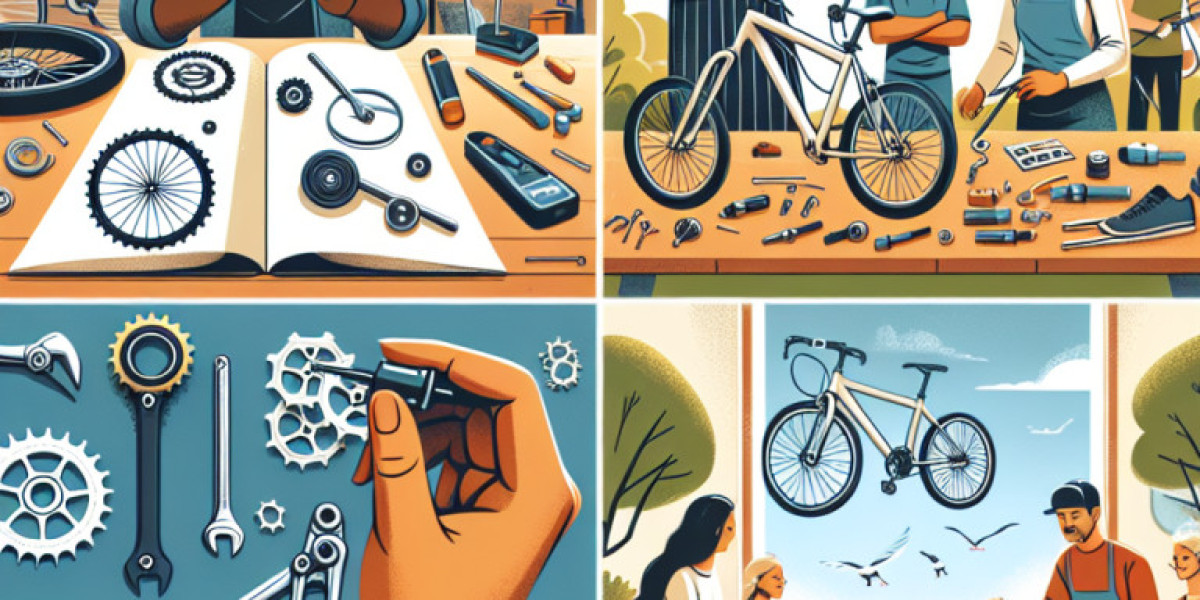
The Purrfect Passage: Expert Tips for Cat Flap Installation
For cat owners, the desire to provide their feline companions with flexibility and independence while maintaining the security and comfort of their home is a common goal. A cat flap, relatively a simple service, provides simply that-- enabling your cat to come and go as they please without needing you to play doorman. Nevertheless, an improperly set up cat flap can lead to draughts, security vulnerabilities, and disappointed felines. Therefore, comprehending the subtleties of cat flap installation is important for both your cat's well-being and your assurance.
This article functions as an extensive guide to cat flap installation, offering expert tips and recommendations to ensure a smooth and effective project. Whether you're a skilled DIY lover or a first-timer, this guide will equip you with the understanding to create the purrfect passageway for your precious cat.
Selecting the Right Cat Flap: The First Step to Success
Before you even consider tools and design templates, it is important to pick the ideal cat flap for your needs and your home. The marketplace offers a diverse variety of options, each with its own set of features and advantages. Think about these elements when making your selection:
- Type of Cat Flap: Cat flaps are not a one-size-fits-all option. They come in various types, each using different levels of security and convenience:
- Standard Manual Cat Flaps: These are the most basic and most inexpensive choices, allowing any cat (or small animal) to go into and exit. They are appropriate for low-security environments.
- Magnetic Cat Flaps: These flaps react to a magnet connected to your cat's collar. They provide a little much better security by avoiding stray animals from entering.
- Infrared Cat Flaps: Similar to magnetic flaps, these use an infrared sensing unit that reads a special collar tag. They are more secure than magnetic flaps and less susceptible to disturbance.
- Microchip Cat Flaps: The most advanced option, these flaps are triggered by your cat's special microchip, ensuring just your pet can get entry. This provides the greatest level of security and control, avoiding unwanted animals from entering your home.
- Material and Durability: Cat flaps are typically made from plastic or aluminium.
- Plastic flaps are usually more economical and lighter but may be less resilient and more vulnerable to weathering.
- Aluminium flaps are more robust, weather-resistant, and safe, frequently featuring a stronger locking mechanism.
- Size of Your Cat: Ensure the flap opening is big enough for your cat to go through conveniently without struggling. Consider your cat's size and type when selecting. Step your cat from chest to ground and add a couple of inches for comfy clearance.
- Installation Location: Where will you be installing the cat flap? Doors, walls, and windows each present different installation difficulties and require specific kinds of cat flaps or additional accessories like tunnels for thicker walls.
- Budget: Cat flaps range in price from fundamental manual models to modern microchip variations. Set a spending plan and think about the long-lasting worth and security benefits when making your choice.
Preparation is Paramount: Setting Yourself Up for Success
Once you have actually chosen the perfect cat flap, proper preparation is crucial to a smooth installation. Rushing into the process can result in mistakes and disappointment. Put in the time to strategy and gather everything you require beforehand:
Choosing the Right Location: Carefully consider the place for your cat flap.
- Security: Choose an area that is not easily available to trespassers and ideally away from public view.
- Ease of access for Your Cat: Ensure the area is easily accessible for your cat, both within and outside. Think about the height from the ground and any obstacles.
- Benefit for You: Select an area that is practical for access and maintenance however does not interrupt the flow of your home.
- Avoiding Utilities: Check for any concealed wires, pipelines, or structural elements within the wall or door where you prepare to set up the flap.
Collecting the Necessary Tools and Materials: Having all the right tools at hand will make the installation process a lot easier. Vital tools typically consist of:
- Cat flap package: This must consist of the cat flap itself, a template, screws, and possibly a tunnel extension depending on the design and installation type.
- Pencil and ruler/tape step: For marking and determining accurately.
- Drill: With proper drill bits for pilot holes and potentially larger bits for cutting if needed by your selected technique.
- Jigsaw or Keyhole saw: For cutting the opening for the cat flap (depending upon material and installation technique).
- Screwdriver: To protect the cat flap in place (frequently a Phillips head screwdriver).
- Shatterproof glass and gloves: For safety during cutting and drilling.
- Sealant (optional): To seal around the cat flap and avoid draughts and water ingress, particularly for external doors and walls.
- Spirit level (optional): To make sure the cat flap is set up straight.
Determining and Marking: Accuracy is crucial for a correct fit.
- Utilize the template offered: Most cat flap packages come with a design template. Utilize this to accurately mark the cutout location on your selected area.
- Consider your cat's height: Position the design template at a suitable height for your cat. The bottom of the flap must be low enough for comfortable entry and exit but not too low that it enables rain or dirt to go into easily.
- Double-check measurements: Before you begin cutting, confirm all your measurements and markings to prevent mistakes.
Step-by-Step Installation in a Wooden Door (Example)
Installing a cat flap in a wood door is a typical DIY job. Here's a basic detailed guide:
- Mark the Cutout: Tape the design template provided with your cat flap kit onto the pet-Friendly door installation at the wanted area. Utilize a pencil to trace the outline of the design template onto the door.
- Drill Pilot Holes: Using a drill and a drill bit slightly bigger than the width of your jigsaw blade (or keyhole saw), drill pilot holes at each corner of the significant overview and potentially a few along the straight edges to make starting the jigsaw much easier.
- Cut the Opening: Using a jigsaw or keyhole saw, thoroughly cut along the marked overview, connecting the pilot holes. Take your time and follow the line precisely. Guarantee you use safety glasses and gloves during this action.
- Test Fit and Sand (if required): Before completely inserting the cat flap, test fit it in the opening. If it's too tight, carefully sand down any rough edges of the cutout up until the flap fits comfortably.
- Insert and Secure the Cat Flap: Place the 2 halves of the cat flap (inner and external frame) into the opening from either side of the door. Align the screw holes.
- Screw Together: Using the screws offered, tighten up the two halves of the cat flap together. Do not overtighten, as this could harm the door or the cat flap.
- Seal (Optional): Apply sealant around the edges of the cat flap where it satisfies the door frame for included weatherproofing and insulation.
Installation Considerations for Different Materials
While wood doors are relatively simple, installing cat flaps into other products needs various approaches:
- Glass Doors and Windows: Installing a cat flap in glass needs specialized tools and knowledge. It is strongly advised to employ a professional glazier to cut and install a cat flap in glass. Attempting this yourself can be dangerous and threats shattering the glass.
- UPVC Doors: UPVC doors often have actually enhanced panels or might include metal components. Installation can be intricate and might require professional support. Carefully check the door's building and construction before trying DIY installation or speak with the door manufacturer's standards.
- Walls: Installing a cat flap in a wall needs developing a tunnel through the wall density. This typically involves acquiring a tunnel extension set that matches the depth of your wall. The installation process resembles door installation however needs careful preparation and potentially more extensive cutting and sealing.
Post-Installation Tips: Welcoming Your Cat to Freedom
When the cat flap is set up, the task isn't quite completed. Here are some tips for helping your cat adjust and making the most of your brand-new cat flap:
- Introduce the Cat Flap Gradually: Don't anticipate your cat to use the flap immediately. Start by propping the flap open and encouraging your cat to walk through it with treats and favorable support.
- Lure with Treats and Toys: Place treats or toys on either side of the flap to incentivize your cat to check out and utilize it.
- Patience is Key: Some cats adjust rapidly, while others may take time. Be client and prevent forcing your cat through the flap, which can create unfavorable associations.
- Look for Draughts and Security: After installation, look for any draughts or spaces around the cat flap. Guarantee it is securely fitted and operating correctly.
- Routine Maintenance: Keep the cat flap clean and without particles. Occasionally examine the locking system and hinges to guarantee they are working smoothly.
By following these tips and taking your time with the installation process, you can produce a safe, hassle-free, and inviting cat flap for your feline good friend, improving their liberty and enhancing their life while keeping the comfort and security of your home.
Regularly Asked Questions (FAQs) about Cat Flap Installation
Q: Can I set up a cat flap in any door?
A: While cat flaps can be set up in the majority of kinds of doors, some require more customized techniques or professional assistance. Wooden doors are the most convenient for DIY installation. Glass doors and UPVC doors might require professional installation.
Q: How high should I install a cat flap?
A: The perfect height depends upon your cat's size, however generally, the bottom of the flap must be around 10-15 cm (4-6 inches) from the ground. This enables most cats to pass through conveniently without having to crouch too low.
Q: What tools do I really require for cat flap technician flap installation?
A: Essential tools consist of a drill, jigsaw or keyhole saw, screwdriver, pencil, ruler/tape procedure, and safety glasses and gloves. A sealant gun and sealant are advised for external doors and walls.
Q: How long does it require to install a cat flap?
A: For an easy installation in a wooden door, it can take anywhere from 1 to 3 hours, depending upon your DIY experience and the complexity of the door. Installation in other products or walls might take longer.
Q: What if I am not confident in my DIY abilities?
A: If you are unpleasant with DIY tasks, it is constantly best to employ a professional handyman or carpenter to install the cat flap for you. This guarantees a correct and safe installation, particularly for more complex installations like glass or UPVC doors and walls.
Q: How can I stop stray cats from utilizing my cat flap?
A: Microchip cat flaps are the most reliable way to avoid roaming animals from entering your home as they only open for your cat's registered microchip. Magnetic and infrared flaps use some, however less trustworthy, security.
Q: Do cat flaps allow draughts?
A: Modern cat flaps are designed with draught-excluding features like brushes or magnetic closures. Nevertheless, proper installation and sealing are important to lessen draughts.
Q: How do I train my cat to use a cat flap?
A: Patience and positive support are key. Start by propping the flap open, using treats and toys to tempt your cat through. Gradually minimize the openness of the flap as your cat gets more comfortable.
Q: Can I install a cat flap in a wall?
A: Yes, cat flap engineer flaps can be set up in walls. This generally needs a tunnel extension kit to connect the inner and external frames through the density of the wall. Wall installations might be more intricate and require cautious preparation.
Q: What maintenance is needed for a cat flap?
A: Regularly tidy the flap and surrounding area to remove dirt and particles. Check the hinges and locking mechanism regularly and tighten up screws if essential. Oil hinges with silicone spray if they become stiff.






